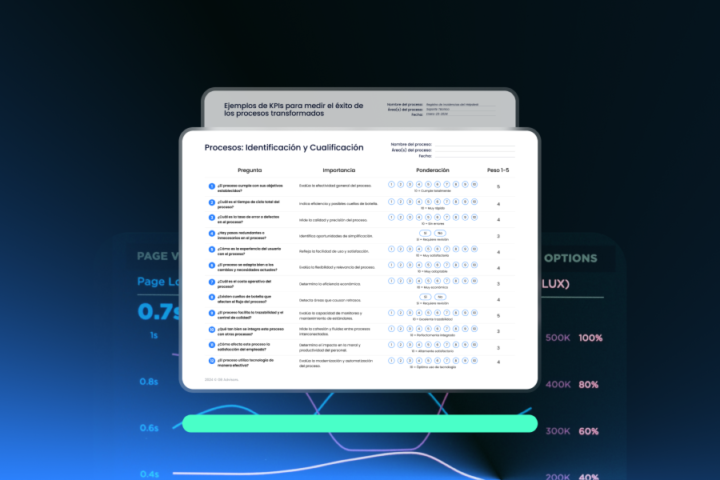 Can ITIL and Agile coexist? This is an increasingly recurring question in the business world. ITIL is undoubtedly one of the preferred frameworks for organizations around the world. However, in spite of its fame and multiple advantages, it has not been able to completely get rid of some misconceptions tha has been created around it. One of the most common; claims its incompatibility with any other standard; which has meant that ITIL is sometimes perceived as a rigid framework.
Can ITIL and Agile coexist? This is an increasingly recurring question in the business world. ITIL is undoubtedly one of the preferred frameworks for organizations around the world. However, in spite of its fame and multiple advantages, it has not been able to completely get rid of some misconceptions tha has been created around it. One of the most common; claims its incompatibility with any other standard; which has meant that ITIL is sometimes perceived as a rigid framework.
But what if we told you that ITIL best practices can adopt methods from other standards like Agile to enhance their performance? Read on and find out how you can take advantage of the combination of ITIL and Agile to achieve more efficient service delivery.
ITIL and Agile: Two not-so-opposite perspectives
Before we start talking about the advantages of combining ITIL and Agile; it is most appropriate that we describe a bit the perspectives of each.
Agile
 We can describe Agile more than as a methodology; as an approach oriented to project management and contrasting with traditional predictive and sequential standards such as cycle V or cascade. From the Agile point of view, the aim of projects is to create a product; which is why it is more inclined towards the term Product Management rather than Project Management.
We can describe Agile more than as a methodology; as an approach oriented to project management and contrasting with traditional predictive and sequential standards such as cycle V or cascade. From the Agile point of view, the aim of projects is to create a product; which is why it is more inclined towards the term Product Management rather than Project Management.
Although Agile was originally conceived for software development; today practice has shown that it can be applied effectively to almost any business project. It is even proven that the combination with other practices such as those proposed by ITIL; can bring many benefits for organizations.
The Agile method is based on four main values; that only need small adjustments to apply to the management of IT services:
- Team, individuals and interactions have higher priority than processes and tools.
- Tools go beyond exhaustive documentation.
- Collaboration with the customer is more important than contractualization of relationships.
- Acceptance of change rather than supervision of rigid plans.
ITIL
For its part, ITIL, the comprehensive framework for IT service management, covers service strategy, design, transition, operation and continuous improvement of the service. The development and start-up phases are constantly evolving according to the service strategy. The latter is continually enriched by the process of continuous improvement.
Do ITIL and Agile have anything in common?
Despite being based on different approaches, ITIL and Agile converge on many relevant points, for example; both aim for iterative progress, direct observation, transparency and collaboration.
By closely observing the principles of ITIL practitioner (Focus on value, Design to improve experience, Start from where you are, Work holistically, Proceed iteratively, Observe directly, Be transparent, Collaborate) we immediately find similarities with Agile’s strengths. For example:
- Focus on creating results to bring added value to service delivery.
- Emphasis on the idea that you not only execute processes but also work around the experience for the client.
- We can link the principles of working holistically, progressing iteratively, observing directly, being transparent and collaborating to the “Collaboration with the client” proposed by Agile.
Where do the ITIL and Agile approaches best converge?
The points where these two methodologies can integrate best vary according to the nature of each business; that is why before combining ITIL and Agile we recommend that you carry out an in-depth analysis of the characteristics and perspectives of both proposals. This will allow you to more easily locate the points where both methodologies can converge.
There is no ITIL process that is prescriptive, that is, all the processes that make up this set of good practices are adjustable to the needs of each business. That means that by adopting an Agile approach, you can adapt ITIL to achieve efficient integration.
Some processes where ITIL and Agile that organizations can best be integrate are the following:
#1 Business Relationship Management

Through this process, ITIL is able to interact between the IT service provider and the business world to facilitate compliance with Agile principles; particularly with regard to business needs, collaboration and ongoing communication.
#2 Service Level Management
From the point of view of ITIL, this process ensures usefulness, in other words; an understanding of the initial needs of companies. The Agile method will then help to prioritize them. Service level management complements Business Relationship Management in terms of non-functional requirements: the guarantee, expressed for example in the levels of capacity, availability, continuity and security that we expect from our project products.
#3 Implementation Management
Through this process, ITIL will help the organization more efficiently manage controls over the Agile team’s products for organized; fast, and value-adding service delivery.

In conclusion, the combination of ITIL and Agile can undoubtedly benefit organizations of all types; as it is an integration that will enable efficient and fast service delivery. This will provide profitability to the business by offering customers immediate responses that meet their expectations.
Remember that the best way to offer agility to your organization is through an effective tool. Get the one that best suits your company’s needs through the free consulting service offered by GB Advisors. Contact us now for more information about leading software solutions based on ITIL best practices.



